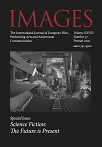Akord à rebours. O muzyce i „duchowej inteligencji” w filmie Interstellar Christophera Nolana
À rebours chord. On music and “spiritual intelligence” in Chris-topher Nolan’s movie Interstellar
Author(s): Katarzyna LisieckaSubject(s): Music, Film / Cinema / Cinematography, Sociology of Art
Published by: Uniwersytet Adama Mickiewicza
Keywords: spiritual intelligence; Tristan chord; Wagner; symbolic form; significant form; concepts of love in the Western culture; Caritas; soundtrack of the movie;
Summary/Abstract: The essay aims to reveal the role of music in the movie Interstellar by Christopher Nolan and its significance in creating an artistic message that relates to the love myths characteristic of European culture and art. The orientation point is the Tristanic myth and the project of musical dramaturgy by Richard Wagner, the founder of the concept of music being the significant layer in a Gesamtkunstwerk, a synthesis of the arts, which strongly inspires i.a. cinema. The article ponders possible messages to be decoded from the music in Nolan’s movie: as a “form of a lover’s discourse” (R. Barthes), “significant form” (Suzanne K. Langer), “symbolic form” (E. Cassirer), responsible for shaping the ambience that constitutes an inherent structural part of the movie in the metaphysical cinema genre. The musical solutions applied by Hans Zimmer in the soundtrack to Nolan’s movie do more than merely imply inspiration from Wagner. They also allow for recognition of the polyphonic way of constructing formal and thematic relations between musical themes and the verbal-visual layer of the movie. This refined artistic project aims at a subtly directed confrontation with the nihilistic picture of love that is representative of melancholic-pessimistic images of the condition of human relationships in the modern culture. The analysed main musical theme, called the “à rebours chord” (i.e. anti-Tristan chord), turns out to be an overt musical manifestation of such a counterpunch and becomes a starting point to telling a story that refers to the concept of love which assumes taking action and fighting for the good of your loved ones, as well as the concept of Caritas and unconditional love. The way that the music and sound of the movie are orchestrated is therefore tightly coupled with its semantic and symbolic message, which allows for perceiving the music as a specific “libration point” of the movie structure. Its function might also be interpreted as a semantic attribute of “a spiritual intelligence”, referring to that which is binding and crucial for the axiological and metaphysical message of the movie.
Journal: Images. The International Journal of European Film, Performing Arts and Audiovisual Communication
- Issue Year: 28/2020
- Issue No: 37
- Page Range: 177-205
- Page Count: 29
- Language: Polish

